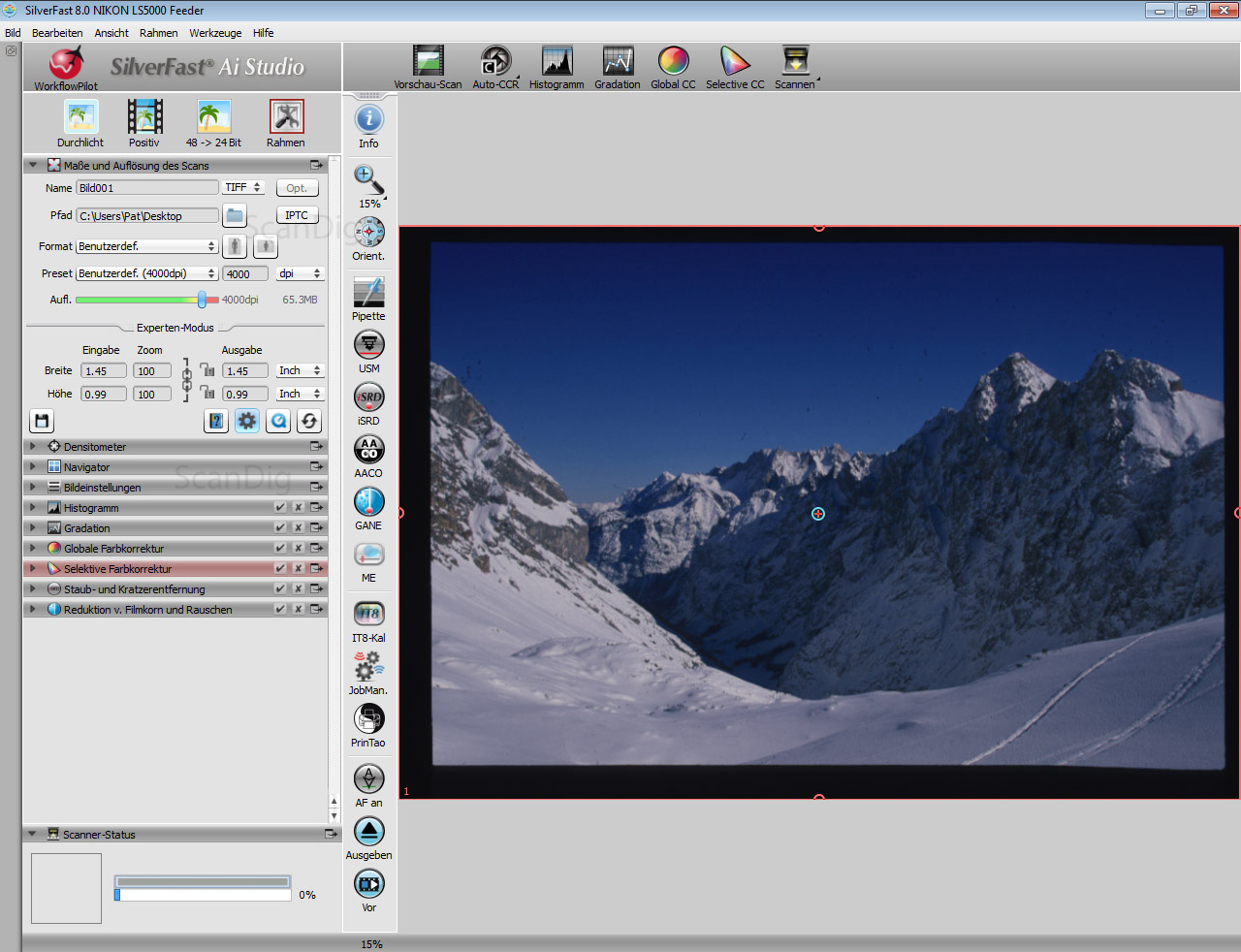

We experimented with downsizing the file to a presentable JPEG for Web display. That creates a very large file, around 1.25 gigabytes for an 8-bit scan, for forty-eight slides. Scanning multiple slides as one image file presents several dilemmas:Īt what resolution do you scan the batch? I chose an equivalent of what the Nikon Coolscan would generate-4,000 pixels per inch. One nice aspect about individual scans, however, is that once you click on the “Scan” button you can walk away from the scanner for forty-five minutes and do something else. Here’s an adjusted version, corrected after scanning (“post-processing”), of one of the images above: This is one reason why you need to make adjustments to raw scans, even if they are very close approximations of the original slides. Note, too, the odd color cast that is the result of the film emulsion’s color dyes shifting over time. Note in the illustration above (made from a different set of slides) the dotted rectangular selection boxes. A straight, unadjusted scan from the preview may be faster, but it’s usually not acceptable “as is.” Some tweaking of the preview scan-”preprocessing”-is required to get the final scan close to where you want it. Does that-being both an advantage and a disadvantage- sound like doublethink? Well, the added step to gain better image quality extends the amount of time it takes to set up each slide.

#SILVERFAST 8.8 BATCH SCAN MANUAL#
A disadvantage is that an automatic or manual tonal and/or color adjustment can be applied to each slide. Though tedious, an advantage of selecting and then scanning individual frames is that an automatic or manual tonal and/or color adjustment can be applied to each slide. Silverfast’s batch mode requires the operator to draw a selection rectangle around each image, as seen in the detailed screen shot below. That’s because I loaded the slides in numerical order, and two slides were missing.) (The scan below has two slide openings that are unfilled. The scan that follows, made from a different set of slides, uses Epson’s slide holders. The scan above is a single image file of forty-eight slides laid out on the flatbed. I tried two methods: scanning each slide individually using the Silverfast batch mode, and scanning multiple slides as one large file. This group represented a variety of subject matter, lighting conditions, film emulsions, and exposure latitudes (slightly overexposed to slightly underexposed). My test sample was a varied batch of slides from the 1950s and 1960s that has two sets of handwritten numbers on the mounts and were likely from slide presentations. A fixed-focus scanner, therefore, may produce out-of-focus scans. Note that laying slides on a scanner’s flatbed only works if the scanner has an adjustable focusing mechanism, because not all slide mounts are the same thickness and the film does not rest on the surface of the flatbed. The 10000XL comes with two slide holders that, in total, hold thirty slides bypassing the holders and laying the slides directly on the flatbed expands that number to forty-eight. (To be fair, the Coolscan was not designed for volume scanning.) The hope for the flatbed scanner was that in batch mode we might be able to produce image files that would be adequate for online access and basic reproduction requests at a higher rate of throughput. Using a flatbed scanner addresses the need to scan more than five slides at a time, a serious limiting factor for the Nikon Coolscan. The second method investigated, the focus of this post, was the possible use of a good quality flatbed scanner-an Epson Expression 10000XL Photo model running Silverfast Ai scanning software, which has a batch scanning mode. Using the Nikon Coolscan film scanner was one of two approaches I explored with equipment on-hand.
#SILVERFAST 8.8 BATCH SCAN SERIES#
The second installation of this series on scanning slides for mass digitization discussed the issues with film scanners that produce high quality scans but at unacceptably slow speeds. If you are not an archivist, or someone interested in scanning large quantities of material, I will not blame you if you stop reading here!

One of the audiences we hope to reach with the Morton blog is practicing archivists, especially those exploring the realm of mass digitization. There may be no way around it: describing, in a meaningful way, my experiments with batch scanning for mass digitization does not lend itself to short blog posts.


 0 kommentar(er)
0 kommentar(er)
